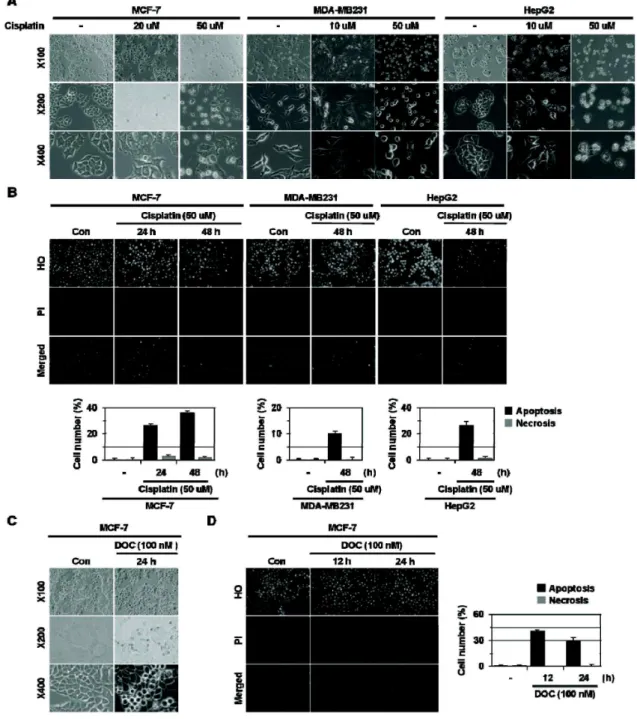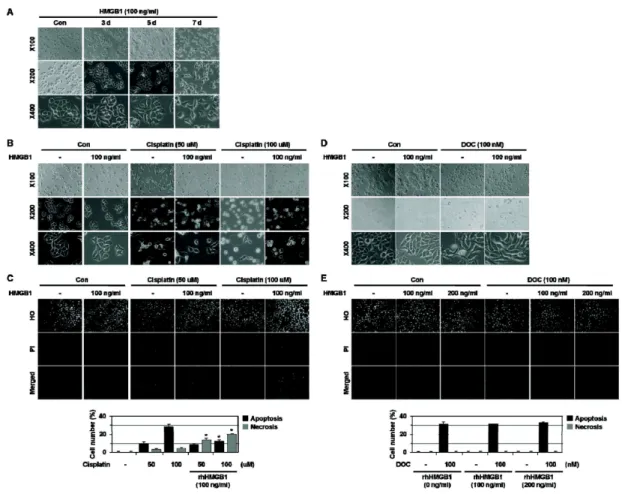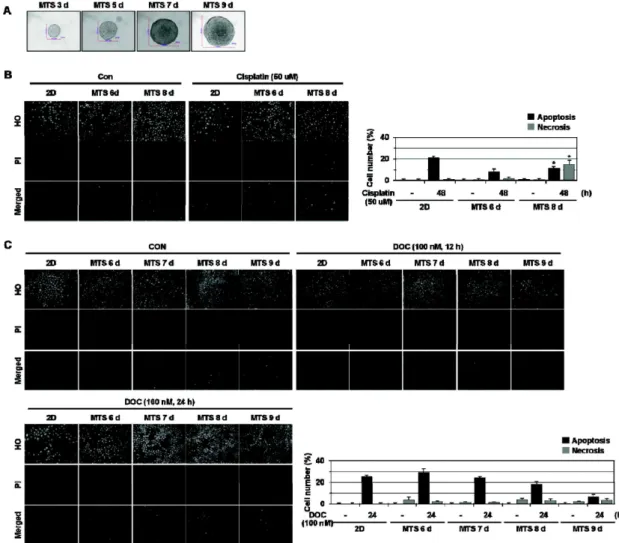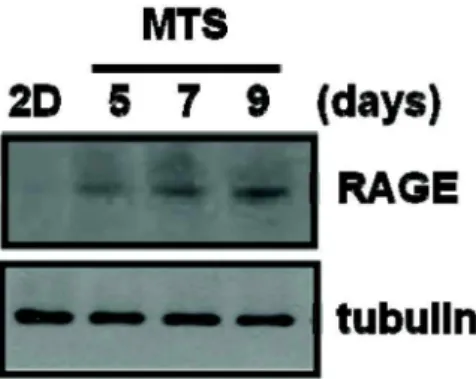HMGB1 Switches Alkylating DNA Damage-Induced Apoptosis to Necrosis
Su Yeon Lee
1, Eui Kyong Jeong
1, Hyun Min Jeon
1, Min Kyung Ju
1, Cho Hee Kim
1†, Hye Gyeong Park
2and Ho Sung Kang
1*
1
Department of Molecular Biology, College of Natural Sciences,
2Nanobiotechnology Center, Pusan National University, Busan 609-735, Korea Received May 12, 2011 /Revised June 22, 2011 /Accepted July 4, 2011
Necrosis is characterized by the cell membrane rupture and release of the cellular contents, including high-mobility group box 1 protein (HMGB1), into the extracellular microenvironment. HMGB1 acts as a transcriptional regulator in nuclei, but exerts a pro-inflammatory and tumor-promoting cytokine ac- tivity when released into the extracellular space. Its overexpression is associated with tumor pro- gression and chemoresistance. Thus, HMGB1 acts as a clinically important molecule in tumor biology.
In this study, we examined whether HMGB1 affects cell death induced by anti-cancer drugs. Here we show that HMGB1 prevented cisplatin (alkylating agent)-induced apoptosis and switched the cell fate to necrosis in MCF-7, MDA-MB231, and MDA-MB361 cells. Similar apoptosis-to-necrosis switch effects of HMGB1 were observed in cells treated with 4-HC, another alkylating agent. In contrast, HMGB1 did not exert any significant effects on docetaxel (DOC)-induced apoptosis in MCF-7 cells. We also show that cisplatin-induced apoptosis was switched to necrosis in MCF-7 multicellular tumor sphe- roids (MTS) that were cultured for 8 days and had necrotic cores, but DOC-induced apoptosis was prevented without the apoptosis-to-necrosis switch. Finally, the levels of RAGE, a receptor of HMGB1, were increased with extended culture of MTS. These findings demonstrate that HMGB1 switches alky- lating agent-induced apoptosis to necrosis, suggesting that the strategy to prevent necrosis occurring as an undesirable action of alkylating agent-based chemotherapy should be delineated to improve the efficacy of chemotherapy for cancer.
Key words : High-mobility group box 1 protein (HMGB1), apoptosis, necrosis, multicellular tumor spheroid
†



